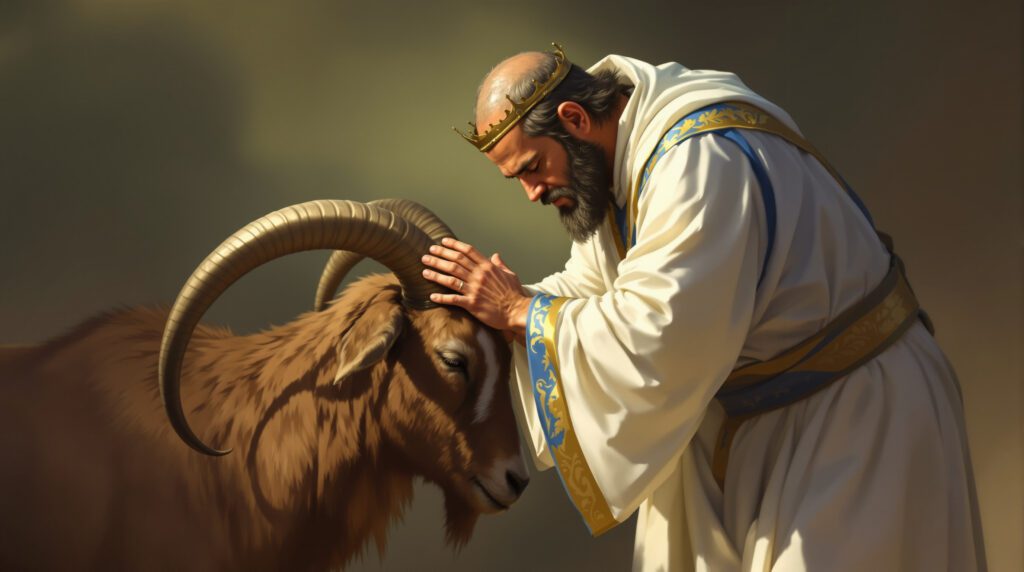Popular teachings are not always rooted in truth nor based on historical fact. Yet these teachings continue to grow in popularity. This trend is nothing new and in fact has long been a part of culture.
For example, you have undoubtedly heard a sermon or Bible teacher teach about the Day of Atonement. This was the only day God instructed Israel’s high priest to enter the holiest of all to make atonement for the nation. Often the teaching mentions the high priest had a rope tied around his waist in case he died while ministering there. This would allow for him to be pulled out since no one else could enter the holy of holies.
If this is true, it would be a powerful reminder of God’s holiness. It also would underscore the fact that today believers have unhindered access to the throne of God through Jesus the Messiah. But the story about the high priest and the rope to pull him out is not found in Scripture or even in Jewish tradition! In Scripture, we have a detailed description of the High Priest’s garments. There is no reference to a rope of any sorts tied around his waist or ankle. Neither can we find an allusion to it in Jewish tradition.
Still, we have heard this repeated so often, it has become accepted as the unmitigated truth. No one knows for sure how this got started. Perhaps a pastor or Bible teacher made mention of it in a sermon so that future generations now accepted it as truth. At this point, it took on a life of its own and was accepted as fact.
One of the things my book, Shadows and Substance: The Truth About Jewish Roots and Christian Believers demonstrates is that true history is often obscured because of “misinformation” people have received. Like the account regarding the high priest, this misinformation is received as truth without searching it out. Or in other cases, people are not wanting to embrace the entire truth. Perhaps Paul had such people in mind when he spoke of those who “are perishing, because they refused to love the truth and so be saved” (II Thessalonians 2:10).
One of the chapters in my book is entitled, “Did Constantine Change Everything?” For seventeen centuries the Church has written about (and argued over) the story of Roman Emperor Constantine. Was his conversion genuine or was it merely a political ploy to gain control over the Christian Church? There is no way of knowing for sure. What we do know is that upon going out to the Battle of Milvian Bridge in 312 A.D, he saw, as he looked up at the sun, a cross of light above it with the words, ‘In this sign, conquer.’ Afterwards, Constantine commanded his troops to put the Christian symbol on their shields and conquered. As a result, Constantine accepted the Gospel as truth (although he himself wasn’t baptized till his death bed).
Constantine stands as a perfect example of teachings that become popular, although they are not an accurate representation of what truly happened. I placed this chapter near the beginning of the book in the section called ‘The Churches of the Gentiles’ because it deals with one of the main arguments many Jewish Roots teachers use in trying to persuade non-Jewish believers to accept their teachings; that before Constantine came along and changed Christianity by merging paganism with it, the Church was thoroughly Hebraic in its beliefs and practices. For example (according to many Hebrew Root’s teachers), before Constantine, the Church observed the weekly Saturday Sabbath as the day of worship. This included the churches of the Gentiles. But (according to this view), Constantine, after embracing Christianity, instituted Sunday as the day Christians should worship.
To be honest, there is clear evidence that Constantine did formally change the Sabbath to Sunday in what is known as the first edict in favor of the “Venerable Day of the Sun.” But does that mean that before Constantine, Gentile churches kept the Jewish Sabbath as is often asserted by some HRM teachers? The only way to ascertain this is by searching the New Testament writings themselves to determine if the apostles whom Jesus sent out told non-Jewish believers to keep the Sabbath and for that matter, the Jewish Feasts as well. If there is sufficient reason to believe that they did, then there is precedent for believers to observe them.
But searching the New Testament carefully we find no such instruction from the Jewish apostles. That’s because they recognized that the Law was only a “a shadow of the good things to come instead of the true form of these realities” (Hebrews 10:1). As I point out frequently in the book, the Old Covenant dealt with shadows rather than substance.
That is also why I deal in much of the book with the difference between tradition and Scripture. Much of what many Jewish Roots teachers are teaching is based on Jewish tradition rather than the truth of Scripture. Like the idea that the high priest had a rope tied around his waist or ankle, so much of what is taught is based on unbiblical tradition and conjecture. Hopefully, this book will go a long way in distinguishing between the misinformation that much of the Hebrew Roots Movement is putting out, and the truth contained in Holy Scripture.





Having come from a Sabbath keeping church I can attest that the argument you lay out here is exactly what we were taught to argue. That Jesus kept the Sabbath and that Constantine changed the day. That it was like a light switch…on or off. However, I agree that there are plenty of NT scriptures that address this (Romans 14:5 for example) and show what the early church leaders were teaching regarding the Sabbaths and the Holy Days.
I appreciate your dedication to the truth of the gospel and scripture.
Excellent Post. Another example of this are cultural sayings that become scripture in some peoples minds like, ” God helps those who help themselves”. Ehhh…sounds kind of man centered. Lol